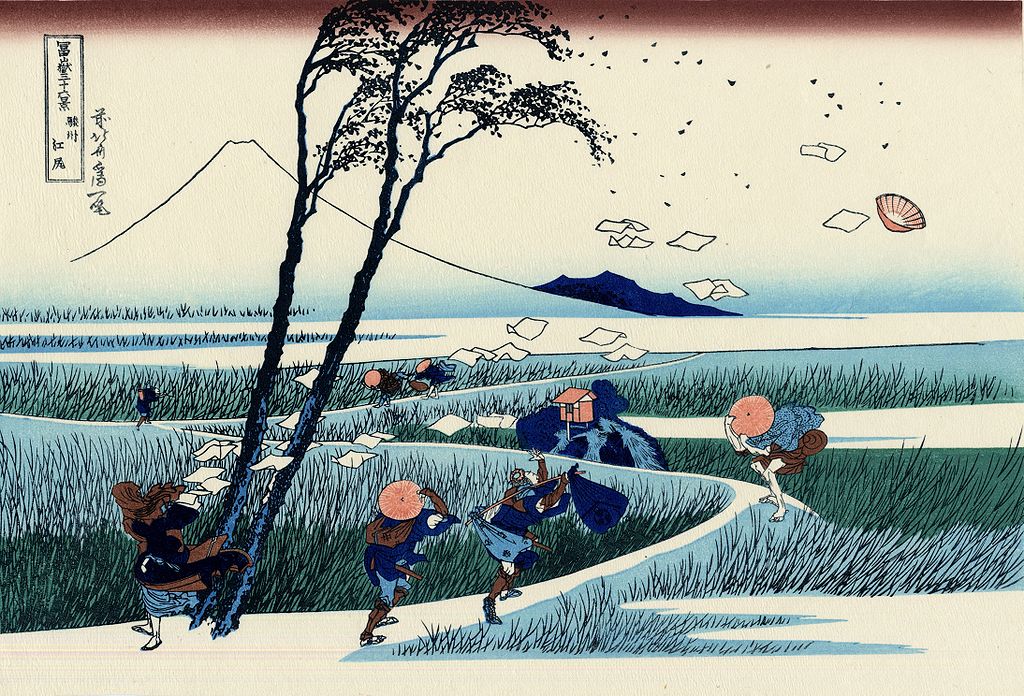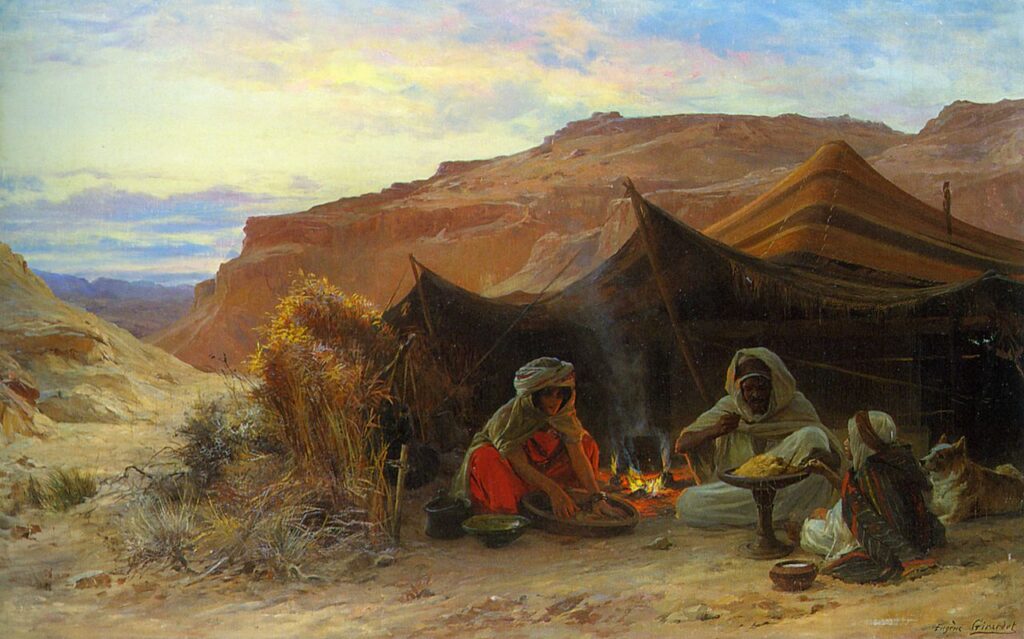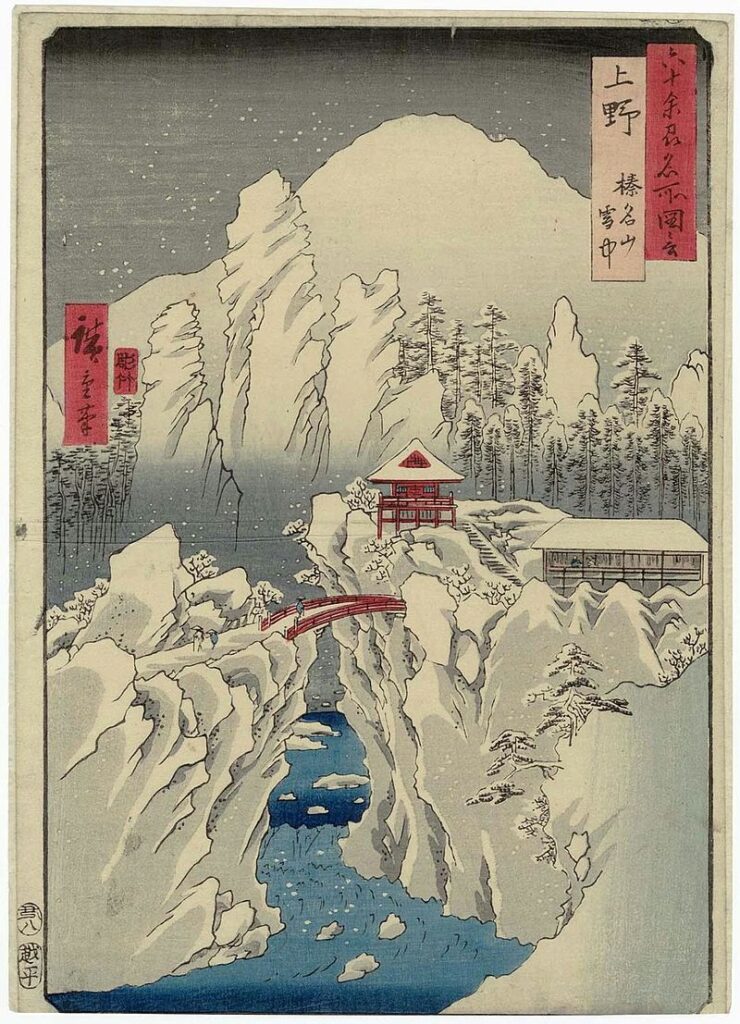
“Watsuji thus accomplishes a revolution in the history of being, and it is in this sense that I consider that the theory of mediance is a real overcoming of modernity” (Augustin Berque).
After much hesitation, French geographer Augustin Berque became one of the most dedicated admirers of Watsuji’s Fudo, and used its method in his own study of “milieus,” in Mésologie as well as a number of other works, such as Ecoumène, which, as far as I know has not been translated into English. When he first read Fudo, however, in its English translation as well as its original Japanese, he was very critical of the book.
The shortcomings of Fudo
Berque admits that, for a long time, he was more annoyed by what he saw as the shortcomings of Fudo than impressed by its contributions to ecological scholarship. He already knew that the use of technology stood in the way of a simple cause and effect relationship between climate and culture. He had, of course, read Geoffrey Bownas’ deterministic translation. Even when he later read the original Japanese text, he remained unconvinced because, notwithstanding Watsuji’s denial that his text was not to be confused with a deterministic interpretation, he felt that chapters II, III, IV and V were indeed deterministic!
Berque explains that, at the core of this contradiction lies Watsuji’s confusion between hermeneutics, (which he claims to practice) and introspection, (which he de facto practices). In other words, his confusion is between shutaisei – the other’s sujecthood (Fr “subjectité”) – being a sovereign subject – and one’s own subjectivity (shukansei, subjectiveness – the fact of not being objective). Hermeneutics requires that one understands the point of view of others as “other.” Introspection does little more than deepen one’s own point of view. This confusion leads to an obvious methodological flaw that substitutes the traveller’s impressions to a study of the worldview shared by the members of the society that is the object of the study. Berque says that Watsuji got away with this by pretending that it is precisely because the traveller does not belong to the society, that (s)he could understand it. No, Berque insists, when one does not live in the desert, one can only understand that one does not belong to the desert! When one studies societies that do live in deserts, one understands that a deterministic statement such as “the dry life in the desert gave rise to the belief in a severe and personalised god“ falls short of the truth. Why, Berque asks, has this not happened in the Atacama, the Kalahari, Australia, the Taklamakan or even in the Sahara? The statement that “Desert life generates monotheism,” is a recursive interpretation (going from one particular culture toward nature), not a causal interpretation (going from nature towards the culture). When Watsuji contrasts Europe where temperatures are regarded as ordinary physical data that do not affect people’s mood, to Japan where subtle variations in temperature deeply affect people’s mood, he is merely contrasting “dualism,” characteristic of modern European philosophy, with what he, as a Japanese, feels deeply from the inside.

Watsuji’s so-called “hermeneutical intuition” has obvious limitations. It led Watsuji to conclusions that are at odds with how these societies developed in regard to their view of their own environments. For instance, Watsuji suggested that it is the regularity of natural phenomena in Europe that is at the origin of the modern scientific spirit. In fact, the history of ideas shows that, on the contrary, it was the irregularity they saw in the sublunary world that drove the Greeks to seek, beyond the phenomenal, transcendent, and counter-intuitive truths.
Watsuji’s Legacy
In Berque’s eyes, however, Watsuji was an outstanding observer of the many “human milieus” he visited, from the dark winter nights of Western Europe to the bare mountains of the Arabic desert, because, precisely as a Japanese, he shared the intuitive resonance of his culture with nature. So, in spite of its shortcomings, is there anything of value that Fudo can teach us? What is Fudo’s legacy?
Berque answers that it is its theoretical position, expounded in the preamble and chapter 1, even though it is contradicted in chapters 2 to 5 by the examples he gives us to illustrate it. But, one may ask, how could a man with a superior intellect such as Watsuji have remained unaware of the contradiction? Berque believes it is primarily because, as a Japanese, he is heir to a culture where the distinction between the “I” (the individual) and the “we” (the milieu) is relatively blurred, with this vagueness raised into an ethical and aesthetic value. Additionally, Fudo was written at a time when the Japanese intellectual milieu was dominated by a current which precisely exalted the collective subject at the expense of the individual subject, as a reaction against modern Western individualism. Unprepared for the survey in a foreign environment, Watsuji merely transposed to lands such as Arabia, Europe, etc. the common attitude found in Japanese with regard to the Japanese environment: he presupposed that the feelings of the “I” were also felt by the “we.” The flaw is that the “we” of the Arabs, etc. has little in common with the “we” of the Japanese, and therefore with the “I” of the traveller Watsuji. Berque adds that Nishida made the same error when he presumed that the Japanese imperial system, as a collective Japanese “basho,” could as such become a universal “basho”; and it is still the same error that Japanese imperialism made in assuming that this rule could be accepted by the peoples of the “co-prosperity sphere.”
Here, then, is the set of circumstances that, for a good part, can account for the insufficiencies found in Fudo. Since then, there have been significant advances made in social sciences and, in particular, in geography. It is precisely because of these advances that Fudo‘s theoretical approach was subsequently corroborated in such a way that we can now see in it, in many respects, the brilliant opening of a field of research which, in Berque’s opinion, carries a genuine “overcoming of modernity.”
Fudosei (mediance) as a “structural moment of human existence”
The task that remains now is that of expliciting the terse definition of fudosei (mediance) as “the structural moment of human existence,” which Watsuji gives in the first line of Fudo. “Moment” here means that a dynamic relationship is established between two “halves” of “being,” one corresponding to what Watsuji calls “hito” (the human individual), the other to the relationships (“aidagara”) humans have with each other and with the things of their environment, the totality of these relationships constituting their “milieu.” This second half goes beyond the limits of the first; it is truly existential. Watsuji talks of a “dual structure,” but Berque prefers to use the word “moitié” (half, Latin medietas) because its coherence with the word médiance.
This is, then, how Berque translates the first paragraph of Fudo’s preamble (in my English version that stays very close to the French):
“The aim of this book is to elucidate mediance as a structural moment of human existence. The question here is therefore not how the natural environment governs human life. What the natural environment is generally understood to be is a thing that has been detached from the human mediance – its concrete ground – in order to turn it into an object. When one envisions the relationship between this thing and human life, the latter is itself already objectified. This position therefore consists in examining the relationship between two objects: it does not concern human existence in its subjecthood (shutaisei). It is this subjecthood, however, that is the question for us. Although medial phenomena are constantly called into question here, it is as expressions of human existence in its subjecthood, not of what we call the natural environment. I reject in advance any confusion on this point.”
Maurice Merleau-Ponty’s phenomenology and André Leroi-Gourhan’s anthropology
Derived from Heidegger’s Ausser-sich-sein, (not to mention its Eastern antecedents, known of course to Watsuji), this vision would have remained in the domain of hermeneutical ontology if it had not been corroborated, first, to a certain extent, by the science-based phenomenology of corporeity according to Merleau-Ponty (1908-1961), then more significantly by the anthropology of Leroi-Gourhan (1911-1986), though, of course, Leroi-Gourhan’s thesis is totally independent of Heidegger’s ontology, and a forteriori of Watsuji’s. Leroi-Gourhan’s anthropology indeed shows that the emergence of the human species out of its primate origins was marked by the “exteriorisation,” outside the animal body” of certain initial functions of the latter into a “social body” made up of technical and symbolic systems developing these functions, and this to a degree proper to this particular species. It is therefore, in a way, a probation through double-blind experience: hermeneutical ontology on the one hand, positivist anthropology on the other. Bringing the two together, Berque says, “I consider that the mediance consists in the moment of the couple animal body-body/social body.” More exactly, however, rather than the social body, I speak of the medial body, which is not only techno-symbolic, but also constitutes the ecosystems in the environment, which are invested by technique and symbol. The first anthropises them, while the second humanises them. Eco-techno-symbolic, our environment is therefore properly a human environment. It is the fudo that necessarily completes the animal body of a hito. From the structural moment of these two halves arises the interlink proper to human beings, ningen. Without this interlink (aida), the hito is only an abstraction.

This view of the individual (hito) as augmented into a ningen that includes its “milieu” is of course foreign to the West where the individual is conceived dualistically as a subject in opposition to its environment as an object. Berque regards Watsuji as more radical and coherent than Heidegger. Heidegger’s “being-towards-death” corresponds to the individual’s standpoint for whom, “when I die” everything is extinguished. Watsuji, on the other hand, can speak of a “being-towards-life,” because in the mediance, the extra-individual part of the being does not die with the individual. In other words, the medial body survives the animal body.
Berque writes: “Watsuji thus accomplishes a revolution in the history of being, and it is in this sense that I consider that the theory of médiance is a real overcoming of modernity.” It is true that, since prehistory, human societies have expressed their belief that humans survive physical death. Most religions are associated with the belief in an afterlife in another world of spirits. In many of them these spirits include deceased humans as well as natural forces. Monotheistic religions have prepared the way to the modern view of a nature as object by gathering all these metaphorical “spirits” into one single deity as the unique creator of all beings. Modernity, on the other hand, by opposing the subject to the object, results in an aporia concerning the human relation to nature: how can the same being be at the same time inside and outside nature? In Heideggerian terms, how can Dasein, at the same time, be outside of itself – outside of the animal body – and have no other horizon than the death of this animal body?
To such questions, modernity had nothing to add to the ancient metaphor it had inherited from prehistory: each human being, in addition to his animal body, had an immortal soul, which would survive in another world. The light of mediance puts an end to this incoherence: it is in the structural moment of its very existence, in this world that a human being is towards life.
Apart from this strictly ontological perspective, one cannot minimise the ethical potential of Watsuji’s mésologie, especially in the context of the current ecological crisis. By structurally linking human existence to territoriality, mediance makes it possible to rationally found the environmental ethics without which our civilisation risks leading to the collapse of which Jared Diamond described the precedents. The concept of the human that Watsuji introduces allows us to rationally develop a subjecthood (shutaisei) of territories – and hence their ethical value – since it is our very existence that is concerned here.
In his time Watsuji was in no way a revolutionary. But in the 21st century, as globalisation systematically delocalises human beings, such an idea carries the seeds of a whole other world.
Source:
Augustin Berque – Fudo, Le Milieu Humain (my text is a summary of Berque’s introduction in my own translation)
Should you wish to compare Berque’s translation with Bownas’ text:
Watsuji Tetsuro – Climate: A Philosophical Study (translated by Geoffrey Bownas)
https://monoskop.org/images/9/90/Tetsuro_Watsuji_A_Climate_A_Philosophical_Study.pdf

